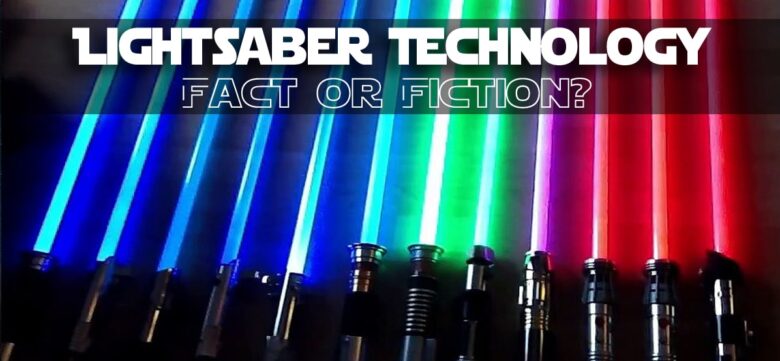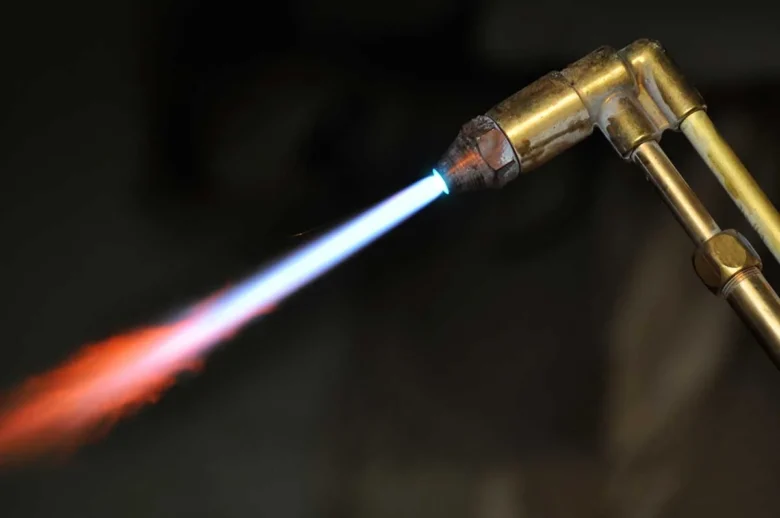Are lightsabers real? You may have heard plenty of myths and tales about the legendary Star Wars weapons, but are they really possible in our world? In this article, we’ll help you uncover the truth behind the science and determine if a lightsaber could ever exist.
Contents
Star Wars Themes and Technology

Source: thepopverse.com
Star Wars has captivated generations with its gripping story-lines, beloved characters, and imaginative technologies. Many fans look to the movies for inspiration and dream about creating a real-life version of their favorite galaxy far, far away. While some have been successful in creating functional replicas of weapons (such as blasters and lightsabers), others may wonder if it is possible to bring these popular Star Wars movie technologies to life.
The technology featured in Star Wars is multifaceted – from battles in the stars to advanced weaponry and more. Lightsabers form the foundation of this intriguing world and are among the most iconic symbols in film history.
Is it a distant dream or could people one day wield a real lightsaber? The answer depends on how one defines “real”. While current scientific knowledge does not support the creation of energy blades that mimic those depicted in Star Wars, some real-world lightsaber-inspired creations have emerged from laboratories around the world.
The best example is laser weaponry which can create an effect similar to that seen in certain lightsaber scenes from the movies – especially when focused on light-emitting diode (LED) crystals.
However, today’s lasers lack features such as blade extensions, hilts and sound effects that are traditionally associated with lightsabers. It is well known that some military forces use laser technologies for extreme accuracy and destructive power; however this is far off from resembling a lightsaber like those found in a galaxy far away!
Lightsabers: Fact or Fiction?

Source: stellarnet.us
They are an iconic and beloved staple of the Star Wars universe, but can they exist in reality? While these weapons are totally fictional, elements of them can be seen in some forms of modern technology.
The primary component of it is its laser blade, which causes objects to quickly ignite upon contact. This kind of power is achievable with modern technologies such as high-power fiber lasers, powerful laser pointers and even small lightsabers made from light emitting diodes (LEDs).
So far no one has been able to create a device capable of rising up a plasma beam whose effect is akin to that produced by a lightsaber – however there may still be hope! Like many other technologies related to science fiction movies and stories, scientists continue to strive towards emulating or surpassing them one day.
Lightsaber Technology in the Real World

Source: scientificamerican.com
Plasma sword created by combining the energy of crystals and beams of light, is inherently an unbelievable concept. Since its 1977 introduction in the original Star Wars movie, this remarkable weapon has been the subject of many myths and legends. But despite its seemingly futuristic vision, could a lightsaber be possible in today’s world? In order to answer this question, we need to look at the scientific and technological advances related to this iconic piece of galactic technology.
This technology in the real world involves several fields including laser engineering, particle physics, crystal physics, electrical engineering and optics. Scientists have proposed a handful of theoretical solutions for constructing such weapons with both lasers and solid-state systems.
In 2018 researchers were able to create light that acts like a blade in space – creating a bright blade in cryogenically cooled air with electrically generated laser light. By using lasers combined with phosphorus nanoparticles they were able to make a 20cm wide beam of light – dispelling any potential doubts that these weapons are out of reach.
Later on that year engineers at Harvard University used special optical waveguides created from diamond nanoribbons fed directly by an infrared laser to create prototypes that would work as “optical circuits” which could generate opticity forms necessary for controlling laser-light beams – yet another achievement proving just how close scientists are getting towards making lightsabers something more than science fiction!
However it still remains unknown if it will ever be possible to replicate similar degrees of control over direct high power lasers like are seen in Star Wars movies – where lightsabers can’t cut through rock walls or deflect blaster shots – but such research continues eagerly nonetheless!
With continued investigation into quantum optics and new advances in exploration into cutting edge particle physics technologies surrounding lasers we may eventually find ourselves bringing these mythological answers out from fantasy realms into our reality !
Lightsabers in Popular Culture

Source: warpedfactor.com
They have become an iconic part of science fiction, and are featured prominently in media such as the Star Wars films. The ones used by the Jedi and Sith can be traced to an invention originally attributed to George Lucas, the creator of Star Wars. They appear in many forms throughout the movies, including a double blade for Darth Maul and different colors for different types of users.
It has become a symbol of power within popular culture, with fans wearing and wielding replicas of the weapon as part of their own fantasy role-playing games.
Lightsaber duels also feature prominently in theme parks around the world, particularly Disney’s Galaxy’s Edge, where fans can take part in interactive shows with lightsaber combat. Additionally, cosplayers at conventions use lightsabers to create exciting visuals that add further diegetic life to their costumes.
Not only have fictional characters used lightsabers through popular media sources like movies and video games but even real-life figures such as athletes and musicians have been seen sporting legal knockoffs in public forums to great fanfare. Lightsabers are no longer merely artifacts from a distant galaxy but instead tangible objects that demonstrate an enthusiasm for sci-fi culture today.
Conclusion
The answer to the question of whether lightsabers can be real is…not yet. However, advancements in laser and plasma technologies have opened a great deal of possibility for fun gadgets that come close to the iconic weapon from Star Wars. So for now, you can relax knowing that we are probably a long way from seeing a true lightsaber, but there are some incredibly exciting possibilities on the horizon.
Until then, may the force be with you!
